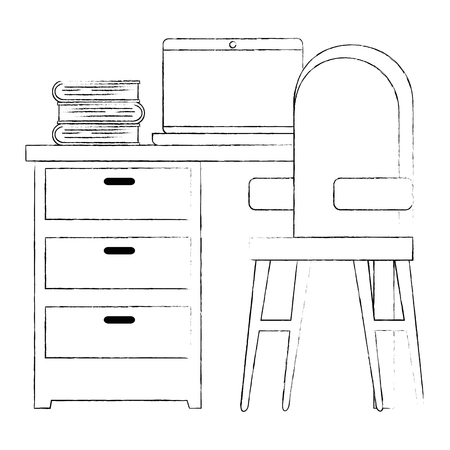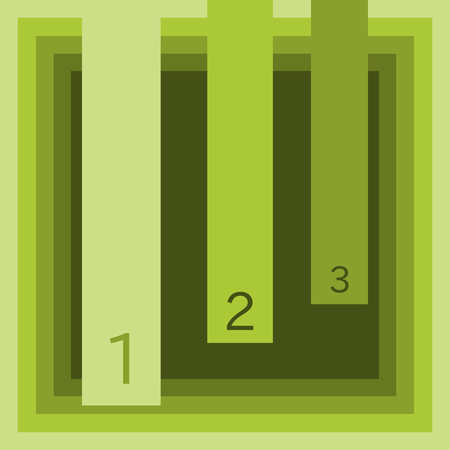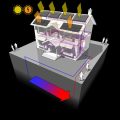1. The American Clutter Challenge
Understanding Why American Homes Fill Up Fast
In the United States, clutter is more than just a messy closet or a packed garage—it’s a reflection of culture, habits, and emotions. Many Americans find themselves surrounded by stuff, from holiday decorations to sports gear, kitchen gadgets, and piles of clothes. But why does clutter seem so common in American homes?
Cultural and Lifestyle Factors Behind Clutter
| Factor | Description |
|---|---|
| Consumer Culture | The U.S. is known for its “bigger is better” mindset and easy access to shopping, leading people to buy more than they need. |
| Large Living Spaces | Compared to many other countries, American homes are spacious, encouraging people to fill rooms with furniture, decor, and possessions. |
| Gift-Giving Traditions | Birthdays, holidays, and special occasions often involve exchanging gifts—sometimes more than a family can use or store. |
| Sentimental Attachments | Heirlooms and childhood memorabilia are treasured and kept for generations, even when not in use. |
| Busy Lifestyles | With work, school, and activities, families have little time for regular decluttering or organization. |
The Emotional Reasons for Accumulating Stuff
- Security: Having extra supplies gives a sense of safety—think stocked pantries or closets full of winter coats.
- Nostalgia: Items hold memories, making it hard to let go of things tied to important life events.
- Status: New cars, tech gadgets, and brand-name goods can feel like signs of success in American society.
- Avoiding Waste: Many keep items because they “might need them someday,” hoping not to be wasteful.
The Practical Side: How It Adds Up
Between big box stores offering bulk deals and busy schedules that delay organizing tasks, it’s easy for clutter to sneak up on even the most well-intentioned families. Over time, what starts as useful storage can turn into overwhelming piles—making everyday living less peaceful and more stressful.
2. Minimalism in the Modern American Household
What Is Minimalism?
Minimalism is more than just a design trend—its a lifestyle choice that many Americans have adopted in recent years. At its core, minimalism is about simplifying your life by keeping only what you truly need and value. Its the idea of living with less, so you can focus more on what matters most.
Core Values of American Minimalism
In the United States, minimalism is often defined by three main values: simplicity, functionality, and intentional living. These values guide people as they make decisions about what to keep in their homes and how to organize their spaces.
| Core Value | Description |
|---|---|
| Simplicity | Choosing to live with fewer items, reducing clutter, and creating open, calming spaces. |
| Functionality | Selecting furniture and belongings that serve multiple purposes or are truly useful in daily life. |
| Intentional Living | Making conscious choices about what you own, focusing on quality over quantity. |
Why Are Americans Embracing Minimalism?
The minimalist movement has gained popularity across the U.S. for several reasons. Many Americans are seeking relief from the stress and overwhelm caused by too much stuff. Others are inspired by popular books and TV shows that highlight the benefits of decluttering. Minimalism also appeals to those who want to be more eco-friendly and mindful about consumption.
Common Motivations for Going Minimalist:
- Reduce Stress: A clutter-free environment helps many people feel calmer and more focused.
- Save Money: Buying less means spending less and investing in quality items that last longer.
- Create More Space: Fewer possessions mean more room to move and breathe at home.
- Environmental Concerns: Consuming less helps reduce waste and supports sustainability goals.
How Minimalism Fits into American Homes
You’ll find minimalist homes across cities and suburbs alike—from small apartments in New York City to modern houses in California. The approach may look different from family to family, but the goal remains the same: create a living space that feels peaceful, efficient, and meaningful. For many Americans, this means donating unused items, choosing neutral color palettes, and organizing their homes with intention—all while blending these practices with traditional Feng Shui principles for balance and harmony.

3. Feng Shui Fundamentals: Energy Flow and Harmony
What Is Feng Shui?
Feng Shui is an ancient Chinese philosophy focused on creating harmony between people and their living spaces. It’s all about arranging your home to encourage good vibes, or what’s called “Chi” (pronounced ‘chee’), the life energy that flows through everything. When you blend Feng Shui with American minimalism, you get a home that feels peaceful, open, and inviting—without a lot of extra stuff.
The Power of Chi: Letting Energy Flow
Chi is the invisible energy that moves through your home. If there’s too much clutter, that energy gets stuck, making rooms feel heavy or stressful. By clearing out unnecessary items and keeping pathways open, you help Chi move freely. Think of it like good airflow—you want fresh breezes, not stale corners.
How Clutter Impacts Chi
| Cluttered Space | Decluttered Space |
|---|---|
| Blocks energy flow Feels overwhelming Can cause stress |
Promotes smooth energy Feels calm and open Encourages relaxation |
Balance: The Yin and Yang of Your Home
Feng Shui talks a lot about balance—specifically the idea of Yin (calm, soft, restful) and Yang (bright, active, energetic). A well-balanced room has both cozy areas for downtime and lively spots for activity. Minimalism helps by removing distractions so you can focus on what truly matters.
Tips for Balancing Your Space
- Add Softness: Use rugs or pillows in sitting areas to balance sleek furniture.
- Mix Lighting: Combine natural light with warm lamps to create both energy and comfort.
- Select Colors Mindfully: Blend calming tones (blues, greens) with energizing accents (yellows, reds).
The Importance of Spatial Arrangement
The way you arrange furniture and decor can impact how you feel in your home. Feng Shui suggests keeping main pathways clear (especially from the front door), placing your bed where you can see the door but aren’t directly in line with it (“command position”), and making sure workspaces are uncluttered for focus.
Simple Feng Shui Arrangements for American Homes
| Room | Arrangement Tip | Feng Shui Benefit |
|---|---|---|
| Living Room | Sofa faces entryway; clear coffee table Minimal decorations on shelves |
Welcoming energy; less distraction |
| Bedroom | Bed against solid wall; avoid clutter under bed Soft lighting at nightstand |
Restful sleep; supportive environment |
| Home Office | Desk faces door but not directly in line Only essential items on desk surface |
Boosts productivity; reduces stress |
A Harmonious Home Supports Wellbeing
Merging American-style decluttering with Feng Shui fundamentals makes it easier to create a space where you feel comfortable, focused, and at peace. By paying attention to Chi, balance, and thoughtful arrangement, your home becomes more than just a place—it becomes a source of positive energy every day.
4. Bridging Cultures: Integrating Feng Shui into American Decluttering
Why Combine Minimalism and Feng Shui?
Combining Western minimalism with Feng Shui creates living spaces that are not just clutter-free but also feel balanced, welcoming, and full of positive energy. While minimalism focuses on simplicity and reducing possessions, Feng Shui brings in the art of energy flow and harmony. The result is a home that feels good to live in—practically and spiritually.
Practical Tips for an East-Meets-West Decluttered Home
1. Smart Furniture Placement
Minimalist homes often feature open spaces and only essential furniture. In Feng Shui, where you place your furniture affects the energy in your home. Here are some tips:
| Room | Minimalist Tip | Feng Shui Advice |
|---|---|---|
| Living Room | Keep only functional seating; avoid overcrowding. | Sofa should face the door but not be directly in line with it for security and comfort. |
| Bedroom | Avoid excess furniture; opt for clean lines. | Place bed against a solid wall, away from the door, to promote restful sleep. |
| Home Office | Simplify workspace; use closed storage to hide clutter. | Your desk should have a clear view of the entrance to boost focus and control. |
2. Choosing Harmonious Colors
Color choices play a big role in both minimalism and Feng Shui. Minimalists love whites, grays, and muted tones, while Feng Shui assigns meaning to colors:
- White: Purity and clarity—great for kitchens and bathrooms.
- Blue/Green: Calmness and growth—ideal for bedrooms or offices.
- Earth Tones (beige, tan): Stability—perfect for living rooms or entryways.
- Avoid too much red or black: These can be overwhelming if overused; use as accents instead.
3. Thoughtful Organization Strategies
The minimalist mantra “less is more” matches perfectly with Feng Shui’s idea of letting energy flow freely. Here are easy ways to organize your home with both philosophies in mind:
- Edit Regularly: Go through your belongings seasonally. Donate or recycle items you no longer use or love.
- Create Clear Pathways: Keep hallways and main areas free of obstacles to let positive energy move smoothly.
- Clever Storage: Use baskets, bins, or cabinets to keep surfaces clear but don’t just hide clutter—only store what you truly need.
- Add Natural Elements: Bring in plants or natural materials like wood and stone for balance (a key Feng Shui principle).
Quick Reference Table: American Minimalism Meets Feng Shui
| Minimalism Focus | Feng Shui Principle | How to Combine at Home |
|---|---|---|
| Simplicity & Functionality | Smooth Energy Flow (Chi) | Select multi-purpose furniture placed thoughtfully for easy movement. |
| Neutral Color Palette | Balance & Elemental Harmony | Add pops of color based on room function; use earth tones for grounding. |
| No Excess Decor or Clutter | Mental Clarity & Calmness | Display only meaningful objects; avoid overcrowded shelves or walls. |
| Tidy Storage Solutions | Cleansing Negative Energy | Store items out of sight but keep storage areas organized and intentional. |
5. Sustaining a Clutter-Free, Harmonious Home
Once youve decluttered and applied Feng Shui principles to your American home, the real key is keeping it that way for the long run. Minimalism isn’t just a one-time effort—it’s about building mindful habits that support a balanced lifestyle every day. Here are some practical tips and routines you can use to maintain an organized, harmonious space without feeling overwhelmed.
Build Simple Daily Habits
Consistency is more powerful than perfection. Try weaving these small actions into your daily routine:
| Daily Habit | How It Helps |
|---|---|
| Make Your Bed Each Morning | Sets a positive tone and creates instant order in your bedroom. |
| Sort Mail Right Away | Keeps paper clutter from piling up on countertops or tables. |
| Clear Kitchen Surfaces After Meals | Makes spaces feel open and supports positive energy flow. |
| Put Items Back Where They Belong | Saves time searching later and maintains organized spaces effortlessly. |
Embrace Regular Decluttering Routines
Instead of waiting for mess to build up, schedule regular check-ins with your space. Here’s an easy-to-follow guide:
| Frequency | Task Example | Benefits |
|---|---|---|
| Weekly | Tidy entryway, recycle old magazines, wipe down surfaces. | Keeps clutter at bay and boosts weekly motivation. |
| Monthly | Review closets, donate unused clothing or household items. | Makes room for new opportunities and reduces decision fatigue. |
| Seasonal (4x/year) | Deep clean rooms, rearrange furniture for better energy flow. | Refreshes your living environment and aligns with seasonal changes. |
Cultivate Mindfulness in Your Space
The American way of minimalism pairs perfectly with Feng Shui when you approach your home mindfully. Pause before bringing new items into your house—ask yourself if they truly add value or joy. Let go of things that no longer serve you, whether it’s clothes, gadgets, or even old holiday decorations gathering dust in the garage. By being intentional with what you own and how you arrange it, you’ll notice a calmer atmosphere and more balanced energy throughout your home.

